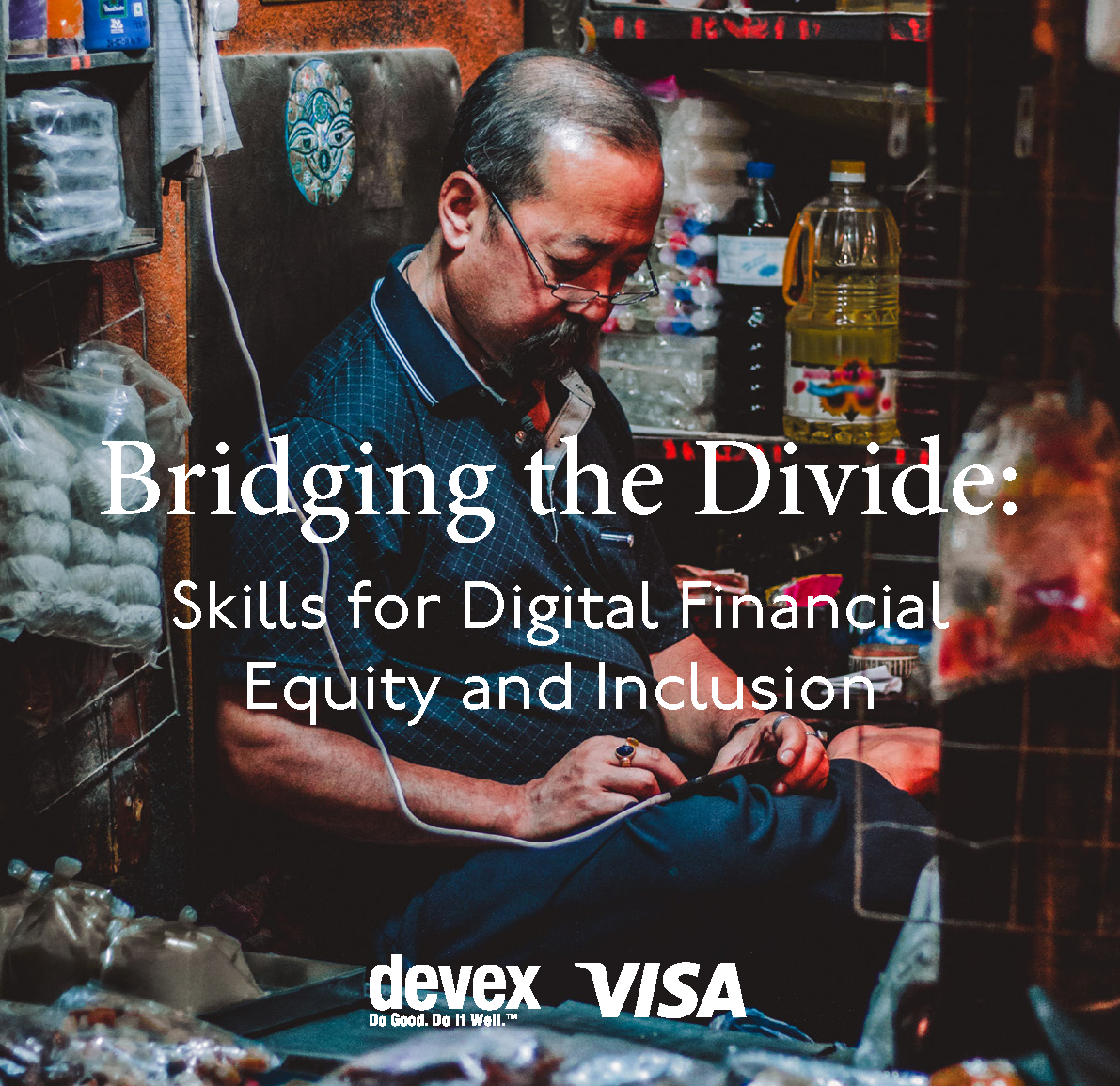This report showcases data-driven insights on the ways in which digital financial services, skills, and trust impact equitable and inclusive participation in the digital economy.
Findings in the report show that initiatives must address the knowledge, confidence and trust needed for individuals to use the technology and services more effectively; programs are most effective when they leverage communities and consider local context; and convening diverse stakeholders brings longer term sustainability, but only when responsibilities are clear.
The report is based on a 2022 online survey hosted by Devex and Visa that collected insights from 1,193 global development professionals and 31 thought leaders in digital financial inclusion.




